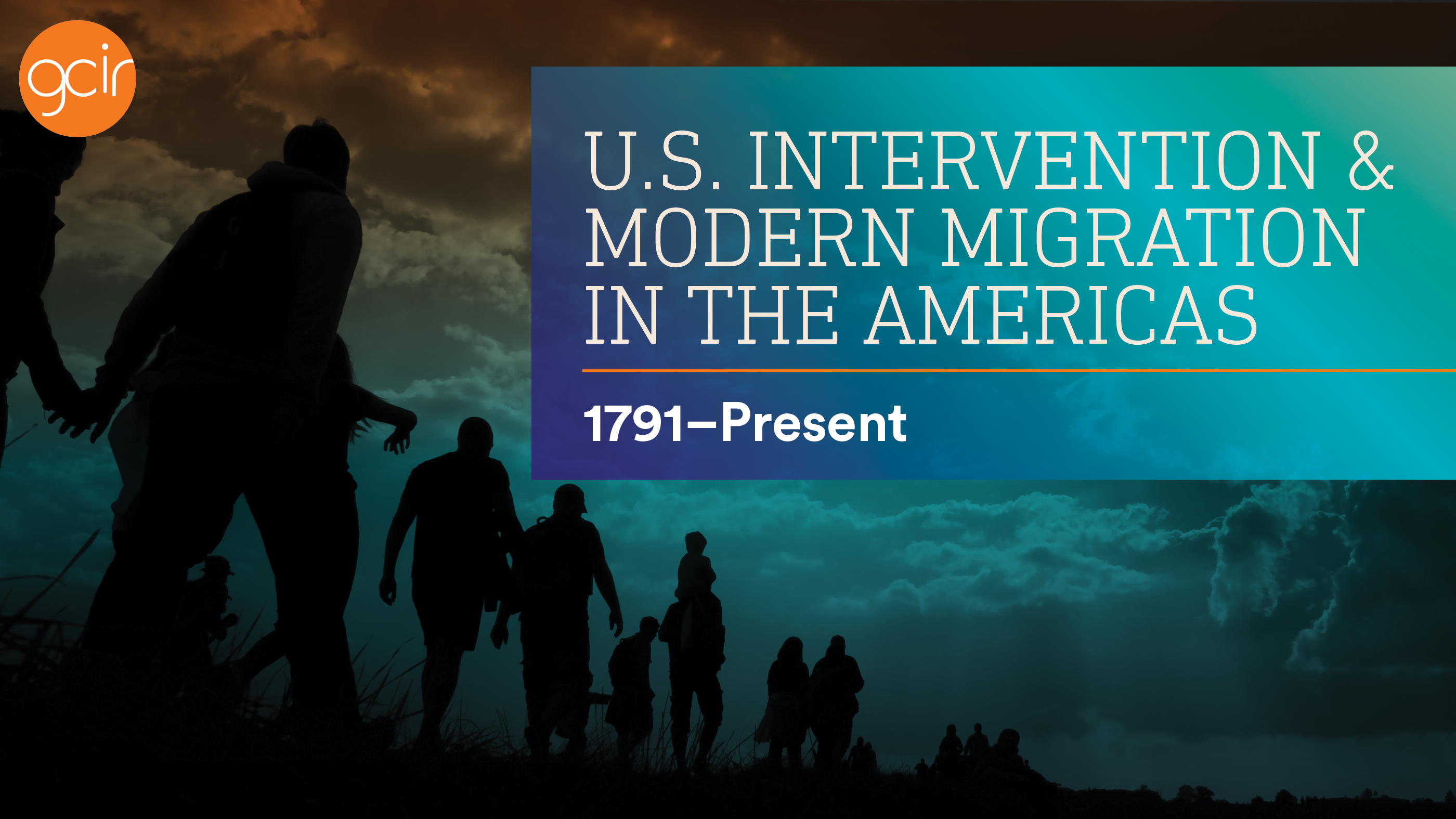Over the last 200 years, the United States government has played a pivotal role in shaping migration flows throughout Latin America. As GCIR's latest timeline details, the U.S. has a long history of destabilizing the region through political intervention, military occupation, and aggressive campaigns that continue to have a lasting impact felt today.
“There’s a lot of history of the U.S. meddling in Latin American affairs,” says Maureen Meyer, who is the Vice President of Programs at the Washington Office on Latin America (WOLA). "Whether that’s the occupation of countries (from Cuba, Haiti, Dominican Republic, and Nicaragua), to supporting coups (in Guatemala, Bolivia, Brazil), to supporting military dictatorships (in Chile, Argentina, and Uruguay).”
Meyer recently joined GCIR’s Vice President of Programs Ivy O. Suriyopas, who created the U.S. Intervention and Modern Migration in the Americas timeline, for an expansive conversation about the root causes of modern migration, the U.S. government’s role in driving instability in the region, and how history can inform philanthropy’s work moving forward.
the legacy of u.s. intervention in latin america
There is not just one factor that causes people to migrate, Meyer says. In fact there are many different reasons that vary from person to person.
“People migrate for economic reasons, but they also migrate because they’re fleeing authoritarian governments, they’re fleeing internal conflicts, violence by gangs, organized criminal groups and other actors, gender-based violence, persecution,” she says. “There are a lot of different factors.”
how the 'war on drugs' helped shape modern migration
More than 50 years have passed since President Richard Nixon first-launched the United States’ “War on Drugs” with a 1971 press conference where he declared that drug abuse was “public enemy No. 1.” Since then, the U.S.-backed War on Drugs has continued to have “a devastating impact for millions of people” throughout Latin America and the Caribbean, Meyer says.
“History does matter — people don’t migrate in isolation or in a vacuum,” she adds. “I think it’s really important to look at how the region has evolved and what the U.S.’s role has been in all of this.”
WHAT NARRATIVES AROUND MIGRATION GET WRONG
It’s important to consider that nobody takes lightly the decision to leave their homes and travel to an unfamiliar country, especially when accounting for all of the dangers they are likely to face along the way, Meyer says. Understanding the gravity of that decision and the many factors that drive people to leave their homes in the first place should help inform how the U.S. government approaches policy solutions.
“If we look at migration [as] multi-causal — there are many factors that contribute to migration — it means we also need to think of multiple ways to address why people are coming and what could be the legal pathways that could be available for these people,” Meyer says.
HOW PHILANTHROPY CAN HELP
“We really need to recognize that the U.S. government’s policies have historically contributed to conditions in several countries in Latin America that have hindered economic development, favored U.S. businesses, weakened the rule of law, and supported (oftentimes) corrupt and repressive governments,” Meyer says.
“As funders, as organizations, activists, including US policy-makers, we should also think of not only what the U.S. history has been, but how we can have a positive impact in the region moving forward,” she adds.
explore the full timeline
The full U.S. Intervention and Modern Migration in the Americas timeline can be explored here. You can navigate the timeline by visiting six historical eras, each of which provides necessary historical context to understand our current picture of modern migration.
U.S. Intervention and Modern Migration in the Americas is the second installment of GCIR’s Im/Migration timeline project. We invite you to explore the first installment, Timeline: Citizenship in the United States, 1781 – Present, which focused on the question of "Who gets to be an American?" and how fights for U.S. citizenship rights have evolved for various groups of people over time.

